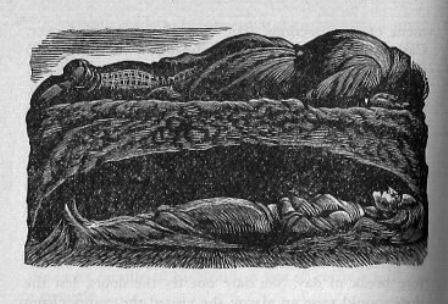Note: Comments can be sent to rrbates1951@gmail.com. Also, you may write me there if you wish to receive, via e-mail, (1) my weekly newsletter or (2) daily copies of these posts. I promise not to share your e-mail address with anyone. To unsubscribe, send me a follow-up email.
Monday
One of our final stops on our recent trip around the east coast was St. Mary’s City, Maryland, where we lived for 36 years before retiring to my boyhood home of Tennessee. For the first time since 2018, Julia and I visited the graveyard where our eldest son lies buried.
It was a sunny and still, chillier but not otherwise unlike the day 24 years ago when Justin drowned in the St. Mary’s River. His gravesite overlooks the spot where a treacherous current pulled him under, and the blue sky and calm water stood in marked contrast to the turmoil of that awful day. As I gazed, I thought of the ending of Emily Bronte’s Wuthering Heights.
Lockwood, the narrator, has been introduced to the tumultuous history of an old English family, including the mad love between Catherine Earnshaw and Heathcliff, which breaks up Catherine’s marriage to Edgar Linton. Like me, Lockwood notes the contrast between a calm day and their tempestuous lives as he visits their graves:
I sought, and soon discovered, the three headstones on the slope next the moor: the middle one grey, and half buried in heath; Edgar Linton’s only harmonized by the turf and moss creeping up its foot; Heathcliff’s still bare.
I lingered round them, under that benign sky: watched the moths fluttering among the heath and harebells, listened to the soft wind breathing through the grass, and wondered how anyone could ever imagine unquiet slumbers for the sleepers in that quiet earth.
I too listened to the soft wind breathing through the grass. And while the pain has never entirely gone away, it has, like the music of Langston Hughes’s long-suffering trumpet player, mellowed to a golden note. I sensed that Justin was sleeping quietly.


